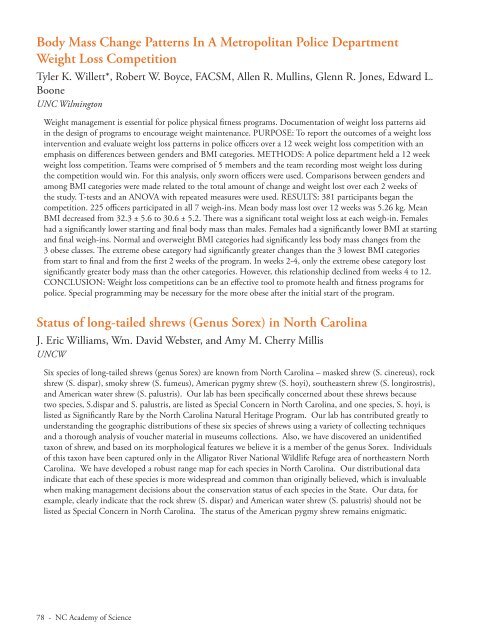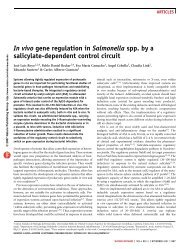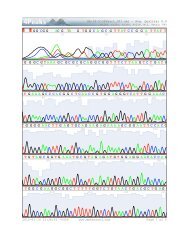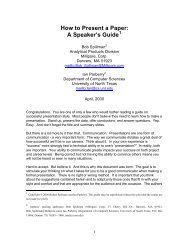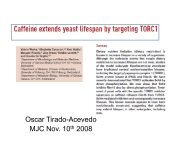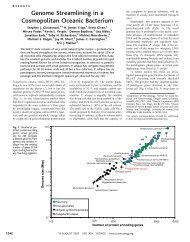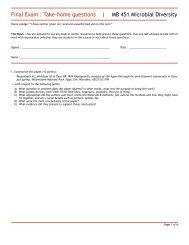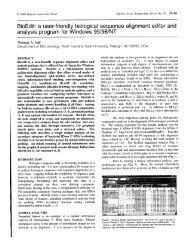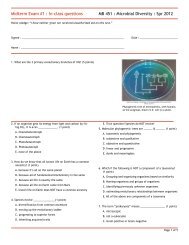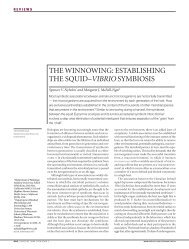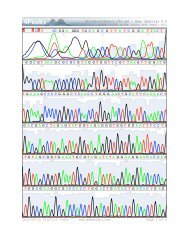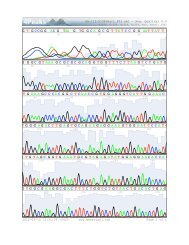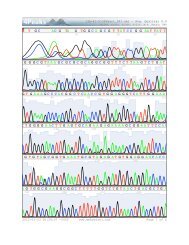Schedule and Program - North Carolina Academy of Science
Schedule and Program - North Carolina Academy of Science
Schedule and Program - North Carolina Academy of Science
Create successful ePaper yourself
Turn your PDF publications into a flip-book with our unique Google optimized e-Paper software.
Body Mass Change Patterns In A Metropolitan Police DepartmentWeight Loss CompetitionTyler K. Willett*, Robert W. Boyce, FACSM, Allen R. Mullins, Glenn R. Jones, Edward L.BooneUNC WilmingtonWeight management is essential for police physical fitness programs. Documentation <strong>of</strong> weight loss patterns aidin the design <strong>of</strong> programs to encourage weight maintenance. PURPOSE: To report the outcomes <strong>of</strong> a weight lossintervention <strong>and</strong> evaluate weight loss patterns in police <strong>of</strong>ficers over a 12 week weight loss competition with anemphasis on differences between genders <strong>and</strong> BMI categories. METHODS: A police department held a 12 weekweight loss competition. Teams were comprised <strong>of</strong> 5 members <strong>and</strong> the team recording most weight loss duringthe competition would win. For this analysis, only sworn <strong>of</strong>ficers were used. Comparisons between genders <strong>and</strong>among BMI categories were made related to the total amount <strong>of</strong> change <strong>and</strong> weight lost over each 2 weeks <strong>of</strong>the study. T-tests <strong>and</strong> an ANOVA with repeated measures were used. RESULTS: 381 participants began thecompetition. 225 <strong>of</strong>ficers participated in all 7 weigh-ins. Mean body mass lost over 12 weeks was 5.26 kg. MeanBMI decreased from 32.3 ± 5.6 to 30.6 ± 5.2. There was a significant total weight loss at each weigh-in. Femaleshad a significantly lower starting <strong>and</strong> final body mass than males. Females had a significantly lower BMI at starting<strong>and</strong> final weigh-ins. Normal <strong>and</strong> overweight BMI categories had significantly less body mass changes from the3 obese classes. The extreme obese category had significantly greater changes than the 3 lowest BMI categoriesfrom start to final <strong>and</strong> from the first 2 weeks <strong>of</strong> the program. In weeks 2-4, only the extreme obese category lostsignificantly greater body mass than the other categories. However, this relationship declined from weeks 4 to 12.CONCLUSION: Weight loss competitions can be an effective tool to promote health <strong>and</strong> fitness programs forpolice. Special programming may be necessary for the more obese after the initial start <strong>of</strong> the program.Status <strong>of</strong> long-tailed shrews (Genus Sorex) in <strong>North</strong> <strong>Carolina</strong>J. Eric Williams, Wm. David Webster, <strong>and</strong> Amy M. Cherry MillisUNCWSix species <strong>of</strong> long-tailed shrews (genus Sorex) are known from <strong>North</strong> <strong>Carolina</strong> – masked shrew (S. cinereus), rockshrew (S. dispar), smoky shrew (S. fumeus), American pygmy shrew (S. hoyi), southeastern shrew (S. longirostris),<strong>and</strong> American water shrew (S. palustris). Our lab has been specifically concerned about these shrews becausetwo species, S.dispar <strong>and</strong> S. palustris, are listed as Special Concern in <strong>North</strong> <strong>Carolina</strong>, <strong>and</strong> one species, S. hoyi, islisted as Significantly Rare by the <strong>North</strong> <strong>Carolina</strong> Natural Heritage <strong>Program</strong>. Our lab has contributed greatly tounderst<strong>and</strong>ing the geographic distributions <strong>of</strong> these six species <strong>of</strong> shrews using a variety <strong>of</strong> collecting techniques<strong>and</strong> a thorough analysis <strong>of</strong> voucher material in museums collections. Also, we have discovered an unidentifiedtaxon <strong>of</strong> shrew, <strong>and</strong> based on its morphological features we believe it is a member <strong>of</strong> the genus Sorex. Individuals<strong>of</strong> this taxon have been captured only in the Alligator River National Wildlife Refuge area <strong>of</strong> northeastern <strong>North</strong><strong>Carolina</strong>. We have developed a robust range map for each species in <strong>North</strong> <strong>Carolina</strong>. Our distributional dataindicate that each <strong>of</strong> these species is more widespread <strong>and</strong> common than originally believed, which is invaluablewhen making management decisions about the conservation status <strong>of</strong> each species in the State. Our data, forexample, clearly indicate that the rock shrew (S. dispar) <strong>and</strong> American water shrew (S. palustris) should not belisted as Special Concern in <strong>North</strong> <strong>Carolina</strong>. The status <strong>of</strong> the American pygmy shrew remains enigmatic.78 - NC <strong>Academy</strong> <strong>of</strong> <strong>Science</strong>


